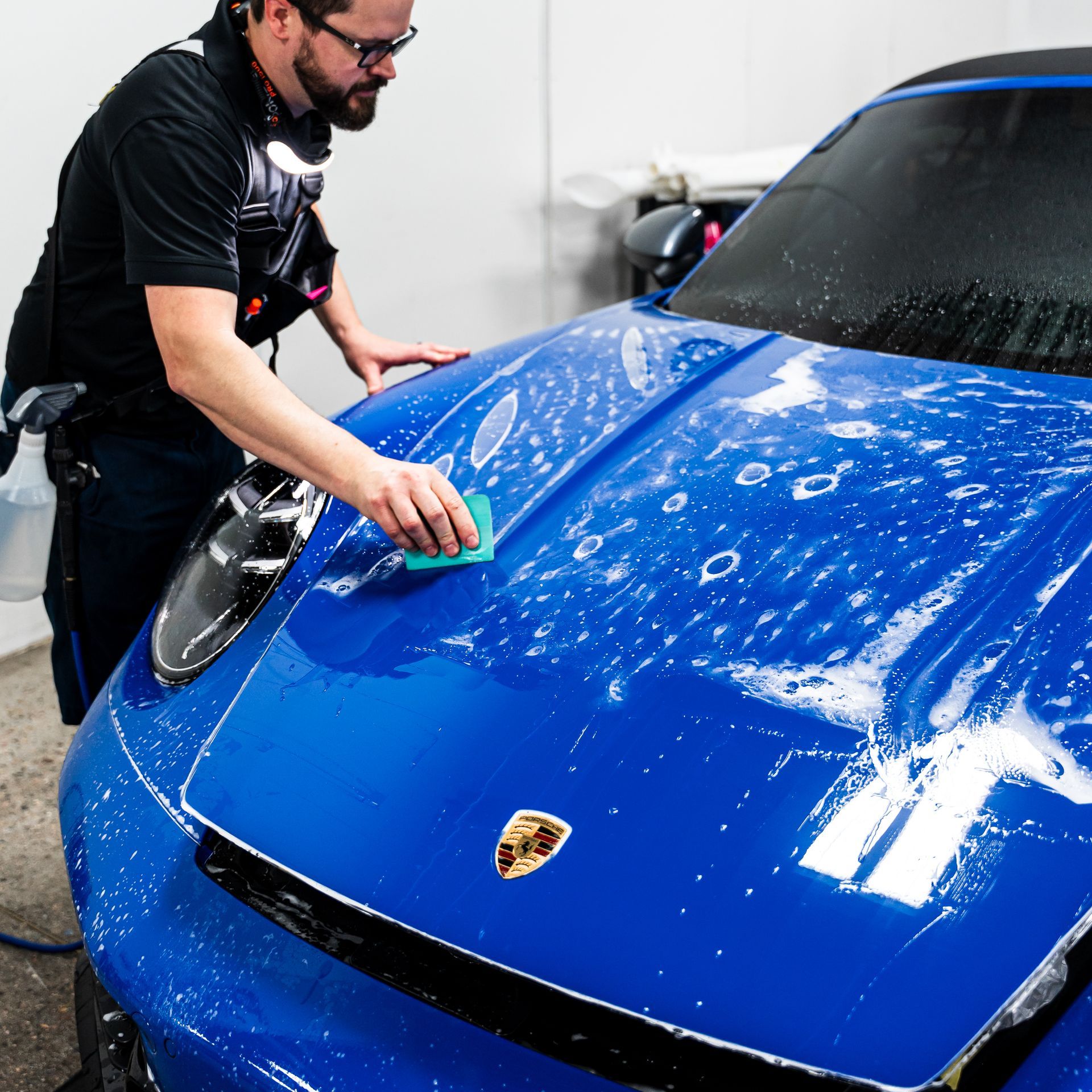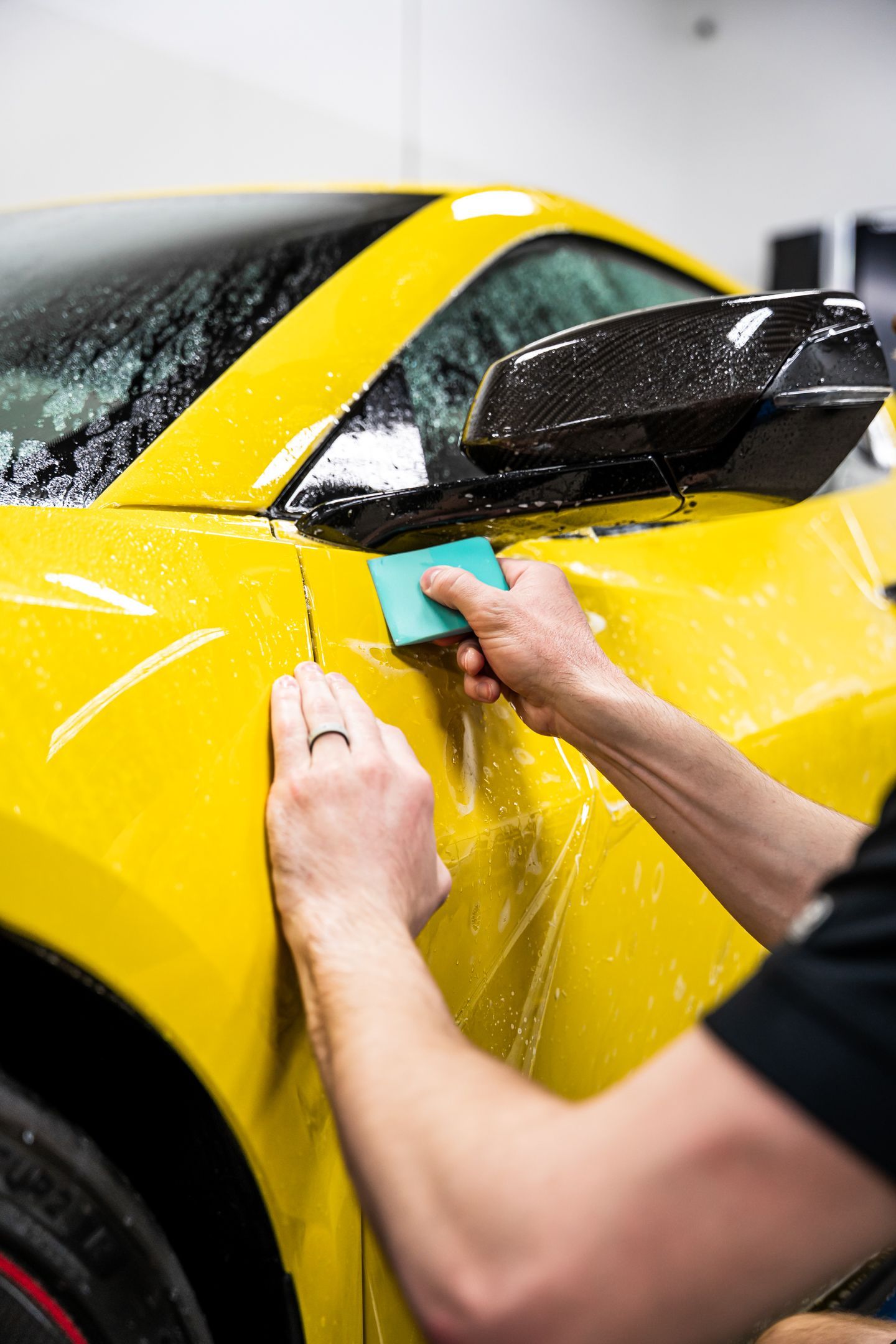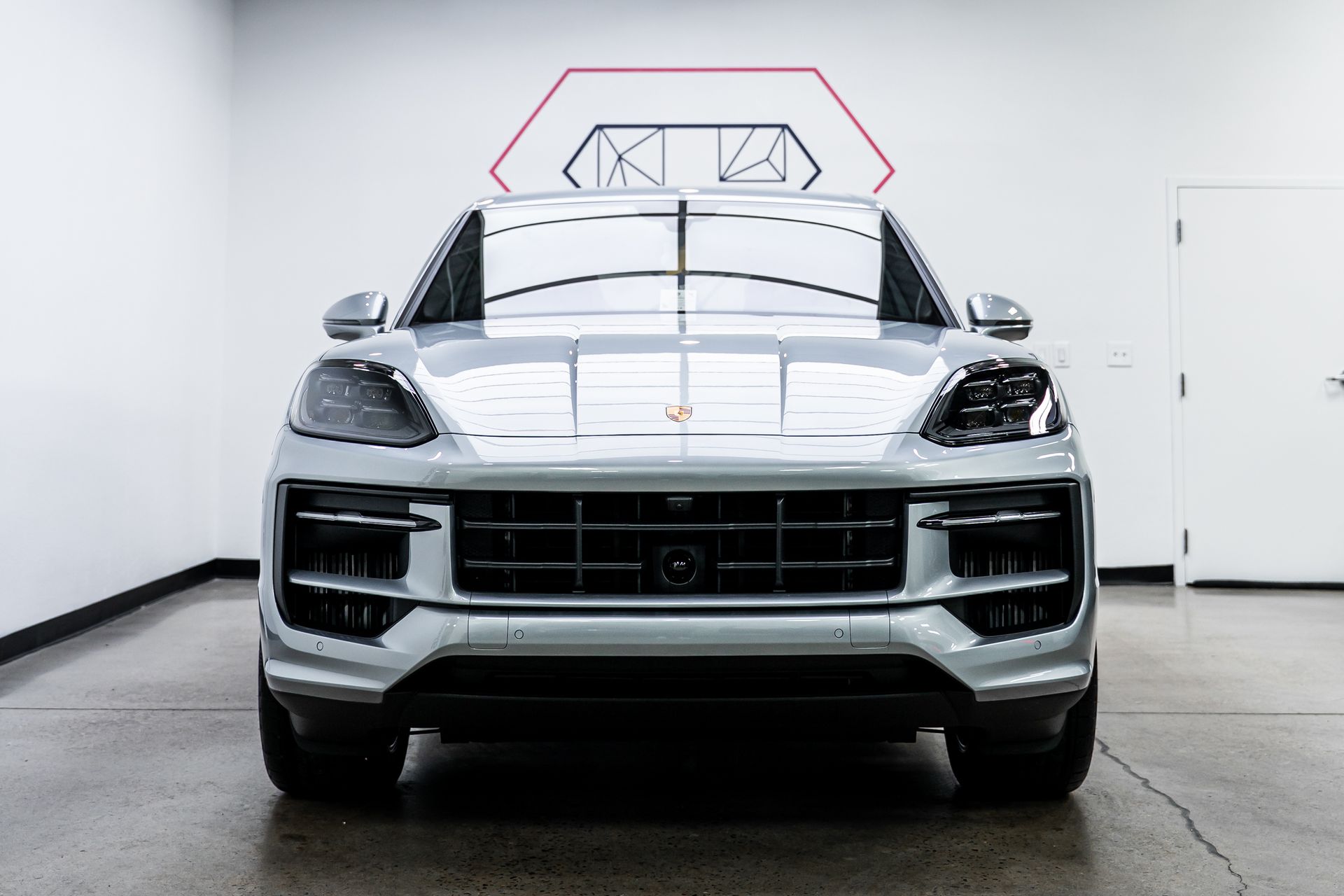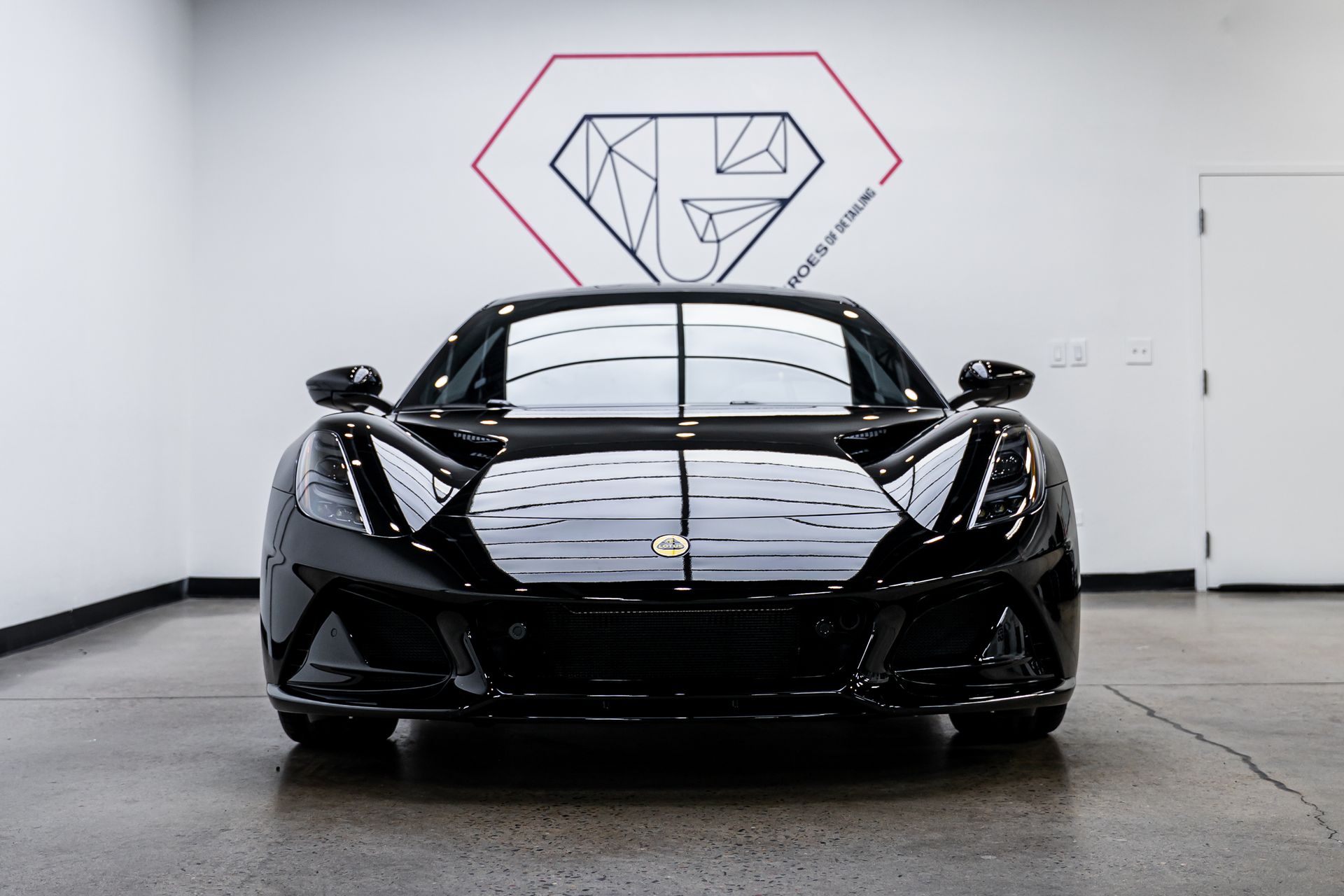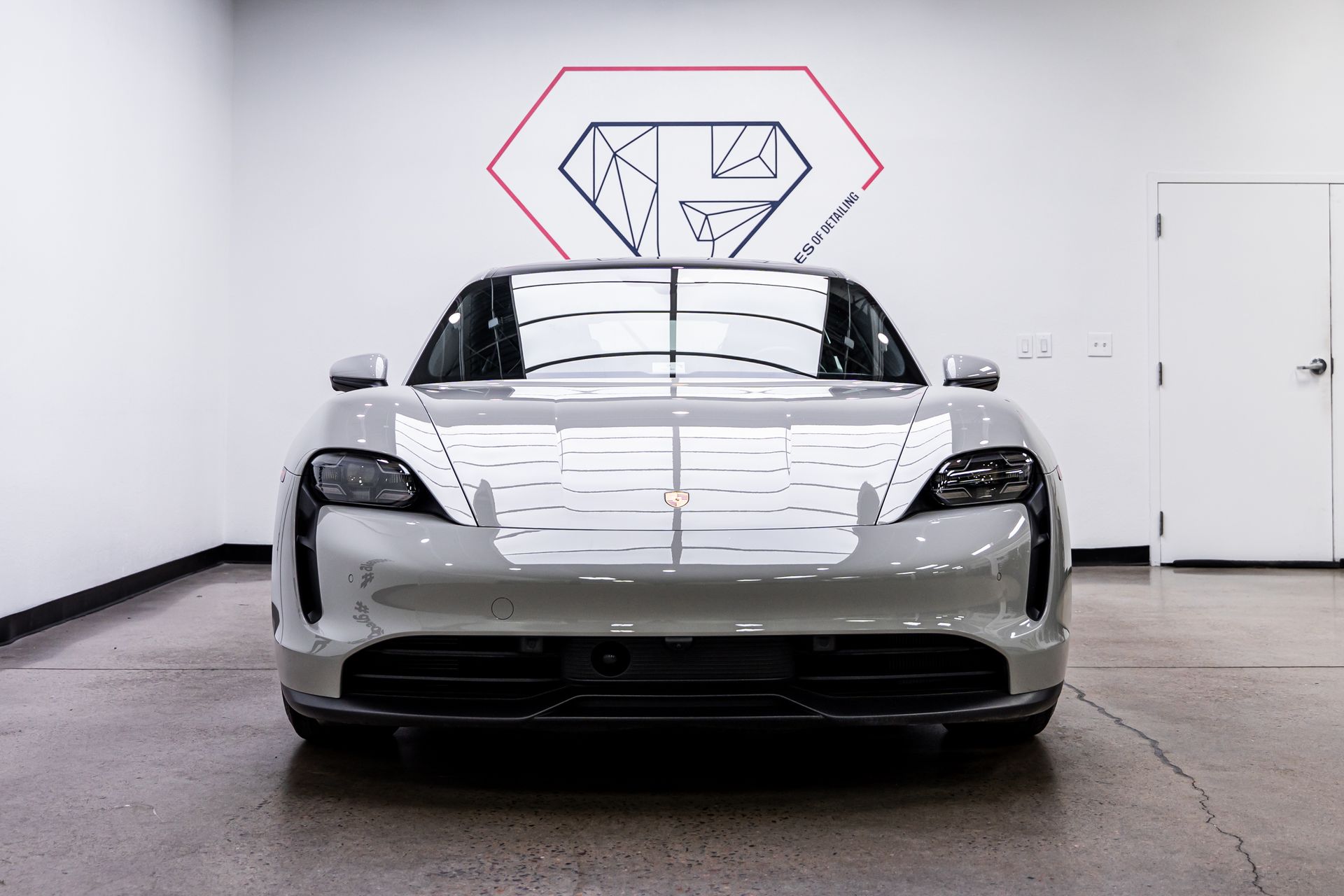The Role of PPF in Minimizing Weather-Related Paint Damage: Benefits and Protection Explained
CALL (720) 662-8520
GET A FREE ESTIMATEIf you think a fresh coat of wax is enough to keep your car looking good, you might be missing out on something that does a much better job. Paint protection film, or PPF, acts like an invisible shield that guards your vehicle's paint from damage caused by everything from harsh sun to flying gravel and even bird droppings. Unlike surface coatings that wear off quickly, PPF offers strong, lasting protection that can save you time and money down the road. Let's dive into what makes this clear armor so effective at keeping cars looking newer for longer.
Paint protection film acts as a durable, transparent barrier that shields vehicle paint from harsh environmental elements such as UV rays, hail, salt, and acidic contaminants like bird droppings and tree sap. By absorbing impact and blocking harmful ultraviolet radiation, PPF significantly reduces fading, oxidation, scratching, and corrosion, thereby preserving your vehicle's appearance and extending the lifespan of its paint finish in all weather conditions.
Defending Your Vehicle from Weather
Weather is relentless, and your car's paint is often the first line of defense against nature's wear and tear. Whether it's harsh sunlight, pounding hail, or corrosive salt, the elements can take a serious toll on your vehicle's appearance and structural integrity. This is where PPF steps in as more than just a cosmetic safeguard. It acts like an invisible shield, absorbing impacts and blocking damaging agents before they touch your paint. Take the sun, for instance. Ultraviolet rays break down paint molecules over time, causing colors to fade and surfaces to oxidize. PPF blocks harmful UV rays, drastically slowing this process. Imagine your car parked outside every day in the blazing sun. Without protection, the vibrant red paint you once loved can turn dull and chalky. PPF preserves that original gloss longer, helping maintain not only beauty but also value.
Moving beyond heat and light, picture a fierce hailstorm rolling in. Each hailstone is a potential chip or dent waiting to happen. Vehicles covered with PPF suffer significantly less damage in these events, with fewer dents and chips compared to unprotected cars after severe hail exposure. The film's thermoplastic urethane composition acts like a shock absorber, dispersing impact energy rather than letting it crack or chip the underlying paint. Yet protection doesn't end with sunlight and hail. Winter introduces its own set of threats that PPF fights silently but effectively. In cold climates, road salt is a major villain. Salt melts ice but also accelerates metal corrosion when it clings to your vehicle's surfaces. Without protection, paint can erode and rust patches form beneath. PPF forms a barrier against these corrosive chemicals; think of it as a sacrificial skin, preventing direct contact between salt and your car's bodywork. This helps keep rust at bay for years, safeguarding metal beneath the paint.
Environmental contaminants like bird droppings, tree sap, and pollen acids might seem harmless but can gradually etch away paint if left unattended. PPF's durable surface resists chemical etching better than bare paint alone. Because these substances stay on top of the film instead of embedding into your paint, cleaning becomes easier and less risky. With so much weather-specific protection packed into one thin layer, it's easy to see why PPF has become an essential investment for vehicle owners aiming for long-lasting beauty. While PPF offers excellent resistance against many weather hazards, it isn't invincible in every respect. For example, rainwater minerals can sometimes leave water spots on the film, spots which aren't always easy to remove without proper care. Understanding such nuances helps set realistic expectations about what PPF does and what additional maintenance might be needed.
How PPF Handles Sun and Rain
The sun is one of the most unforgiving foes your vehicle's paint faces daily. It's not just about the glaring brightness. Intense ultraviolet radiation can slowly degrade the color and finish, leading to that dreaded faded look many car owners want to avoid. Paint protection film is engineered precisely to combat this effect. Made from thermoplastic urethane, it acts as a nearly invisible shield blocking harmful UV rays. This means it drastically slows down the chemical process that causes paint oxidation and fading. Vehicles equipped with PPF experience a slower rate of paint degradation in sunny regions compared to unprotected counterparts. That difference translates into years of sustained showroom-quality gloss, saving owners both time and money on repaint jobs or touch-ups. Alongside UV protection, the film helps moderate heat absorption. By reducing surface temperatures, it prevents excessive thermal expansion and contraction, which can otherwise stress and crack the paint over time. This thermal buffering gives your vehicle a subtle but crucial defense layer during scorching summer months when asphalt heat radiates fiercely.
While the sun assaults from above, rain brings its own set of challenges, especially when mixed with airborne minerals and pollutants. One of PPF's standout features is its hydrophobic property, meaning it naturally repels water. Water droplets don't cling awkwardly on the surface. Instead, they bead up and roll right off. This behavior significantly reduces the appearance of those stubborn water spots caused by minerals left behind after evaporation, commonly a problem for vehicles parked outdoors in rainy or coastal areas. The science behind this lies in the film's smooth yet textured molecular structure, which effectively lowers adhesion forces between water molecules and the car surface. Even when rainwater carries dirt or saline particles, as seen frequently near oceans, PPF acts like a protective barrier, keeping these contaminants from settling deeply into your paintwork.
Keep in mind though, while PPF greatly reduces water spotting, it isn't completely impervious. Heavy rainfall combined with environmental pollutants sometimes leads to spots that require prompt washing before mineral deposits harden into permanent blemishes. This means regular maintenance remains key even with a high-grade protective film in place. Think of PPF as your car's armor. It deflects many attacks but still needs care to keep that armor polished. To maximize these benefits, regular cleaning using pH-balanced shampoos is advised since abrasive cleaners or harsh chemicals can degrade the hydrophobic layer over time. Also, parking in shaded areas when possible complements PPF's sun-resisting abilities by reducing continuous heat exposure.
The Advantages of Using PPF
At its core, paint protection film excels because it acts like transparent armor, shielding your car's paint from a variety of hazards that would otherwise slowly wear down its pristine finish. This isn't just about keeping your vehicle looking fresh. It's about preserving the very essence of your car's appearance, freezing it in time against scratches, chips, and fading caused by the elements. Consider how daily driving exposes your paint to countless tiny injuries. Rock chips fly at high speeds, abrasive road dust scratches the surface, and harsh ultraviolet rays bake darker paints until they lose their luster. PPF acts as a sacrificial layer, absorbing these assaults so your car's original paintwork remains untouched. This is especially crucial on high-impact zones such as the hood, grille, side mirrors, and front fenders, where damage accumulates quickly.
Installing PPF early in a vehicle's life makes all the difference. Applying it over good-condition paint ensures you're protecting an already smooth, glossy surface rather than trying to cover existing damage, a bit like treating a wound versus covering a scar. The film's self-healing properties also mean minor swirl marks and light abrasions can disappear with heat exposure from sunlight or warm water, maintaining that flawless sheen without extra polishing. Beyond aesthetic appeal, there are compelling economic reasons to consider PPF. Vehicles adorned with well-maintained protection films retain higher resale values. Buyers recognize the value of untouched paintwork not just visually but as a sign of meticulous care. This greater resale value often offsets the initial cost of PPF installation within just a few years.
PPF decreases repair costs by reducing chips and scratches, lowering body shop bills. It makes cleaning easier since dirt and grime slide off smoother surfaces. You'll find yourself waxing less frequently because PPF resists UV damage and oxidation are better than unprotected paint. Most importantly, it maintains that showroom-quality finish, which enhances pride of ownership and daily enjoyment of your vehicle. For those planning long-term vehicle ownership, five years or more, the cost-to-benefit ratio strongly favors investing in PPF. It transforms upkeep from reactive repairs into proactive preservation. And for high-end or premium cars where every scratch matters, it becomes indispensable. Of course, while the benefits are many, it's important to select quality films installed by skilled professionals to maximize these advantages. Poorly applied film or substandard materials can diminish performance and even create visual distractions.
When choosing PPF, look for features that matter. High transparency maintains original paint color and gloss. Self-healing properties mean minor scratches vanish with heat exposure. Durability ensures the film withstands extreme weather for five to ten years. Warranty coverage provides peace of mind with defect protection. And proper removability means the film removes cleanly without damaging paint. Selecting films offering extended warranties provides assurance that you are protected against premature failures. Similarly, opting for professional installers ensures precise application around curves and seams, preventing bubbling or peeling over time. If you plan on trading your car within a few years or leasing it, PPF may not be the best choice due to removal costs. However, if ownership longevity and vehicle preservation top your priorities list, this transparent shield offers unmatched peace of mind paired with aesthetic excellence.
Is PPF a Good Investment for Your Car?
Deciding whether to invest in paint protection film hinges on weighing the value it brings against your specific circumstances. PPF is not merely a cosmetic upgrade. It serves as a durable barrier that guards your car from everyday hazards, from road debris to sun damage. However, its true worth depends largely on where and how you drive, as well as the vehicle's overall value. For instance, if you regularly travel on highways or rough roads sprinkled with loose gravel, the likelihood of paint chips and scratches skyrockets. In such cases, PPF's ability to absorb impact and self-heal minor blemishes becomes more than just a convenience. It's a preventative strategy that can save thousands in repainting costs over time.
But what if your driving situation doesn't include these risks? Suppose your car lives most of its life in a sheltered garage, occasionally venturing out on smooth city streets. The benefits of PPF might be less immediate or obvious in such scenarios. If your exposure to harsh environmental factors, like intense UV rays, acidic bird droppings, or industrial fallout, is minimal, you may question if the upfront cost justifies the protection offered. It's important to realize that while PPF provides excellent defense against physical damage, it is not a catch-all solution for all types of wear and tear. To decide wisely, start by assessing your environment and lifestyle. Consider how often and where you drive. Take into account local weather patterns. Areas with frequent hailstorms or intense sunlight will accelerate paint deterioration without protection. Also factor in how long you plan to keep the car since PPF's durability, typically between five to ten years, pairs well with long-term ownership aiming to preserve resale value. For vehicles leased short-term or destined for trade-in soon, the investment may seem less critical.
Beyond environmental factors, reflect on your maintenance habits. PPF requires proper care through regular washing with appropriate products to maintain clarity and self-healing functions. Neglecting film maintenance can diminish its lifespan and effectiveness, reducing the return on investment. PPF is recommended when you frequently drive on highways or gravel roads or face harsh weather conditions. It makes sense for newer models, luxury vehicles, and long-term owners who are willing to commit to regular cleaning and upkeep. If you're prepared for the initial higher cost, PPF provides exceptional value. On the other hand, you might skip it if your car is mostly garage-kept with short local trips, if it's an older vehicle nearing the end of its lifecycle, or if you have minimal interest in maintenance or are particularly cost-sensitive. What stands out is that PPF shines brightest when it aligns with thoughtful ownership. Drivers who see their vehicle as an investment worth preserving both aesthetically and financially benefit most. By forming a protective shield invisible to the eye yet tough against damage, PPF helps ensure your paint job remains pristine far beyond what waxes or ceramic coatings alone can achieve.
Moreover, many experienced installers now offer tailored packages focusing coverage on high-impact zones like bumpers, hoods, and mirrors. This flexible approach lowers costs while protecting vulnerable areas effectively, a middle ground for budget-conscious drivers wanting some level of protection. Ultimately, the decision rests on balancing your vehicle's exposure risks with your personal priorities for appearance and longevity. If retaining near-perfect paint condition matters deeply, as it often does with luxury cars or cherished rides, PPF proves an invaluable ally against nature's relentless wear. On the other hand, owners content with routine touch-ups may find less urgency in spending upfront on this advanced protective layer. Having considered these facets carefully, your next step should be consulting with a reputable professional installer who can evaluate your vehicle specifically and recommend the optimal coverage plan tailored to your needs. PPF offers significant value when matched to your driving habits and vehicle goals. With expert advice and proper maintenance, it becomes a smart investment that safeguards your car's finish and enhances long-term satisfaction.
Durable PPF Solutions for Lakewood, CO Drivers
Safeguard your vehicle with Denver Auto Shield’s expert paint protection film services in Lakewood, CO. Our high-grade PPF acts as a strong, clear shield that resists impact, reduces maintenance needs, and supports the long-term integrity of your paint. With precision application and a commitment to quality, we deliver results that hold up through Colorado’s changing seasons. Schedule your installation with us today!


